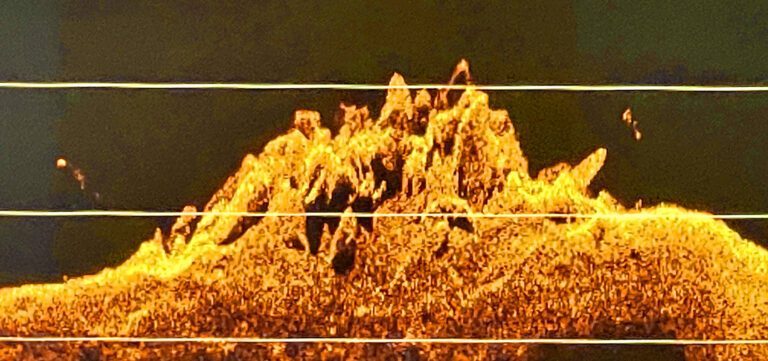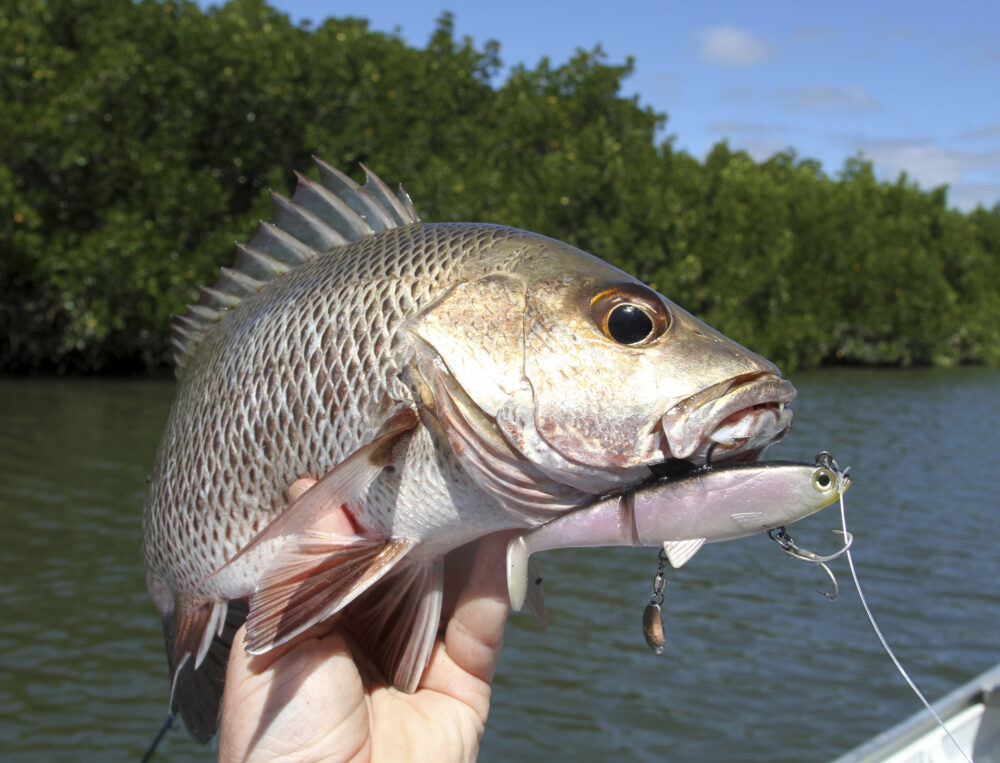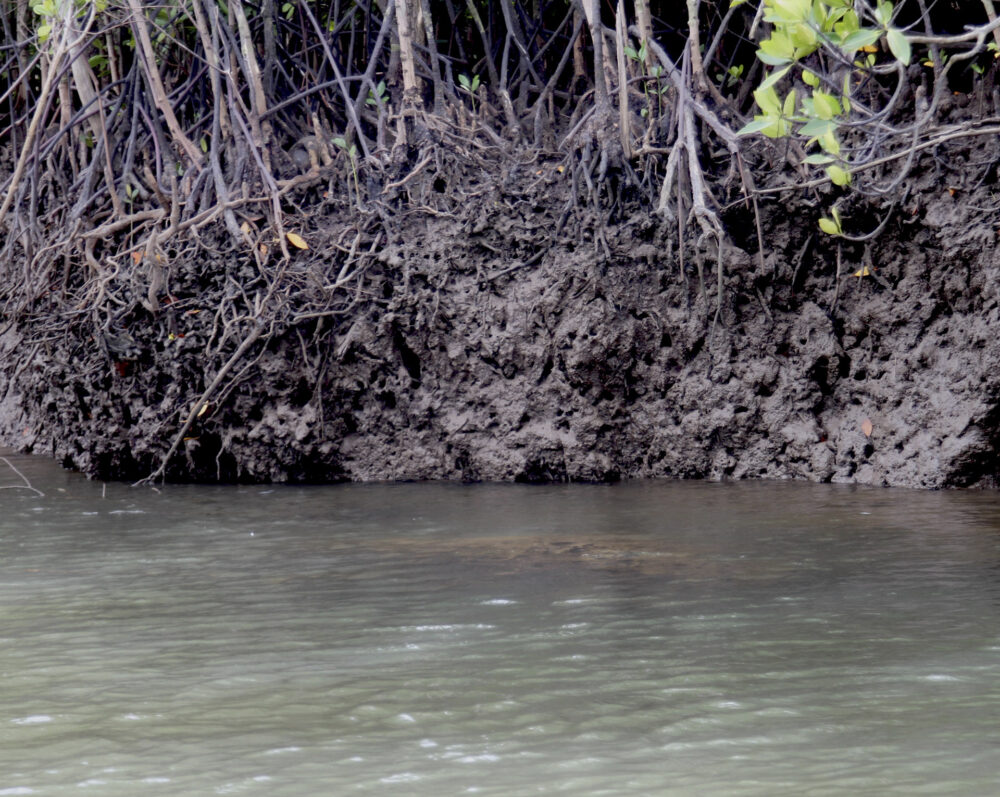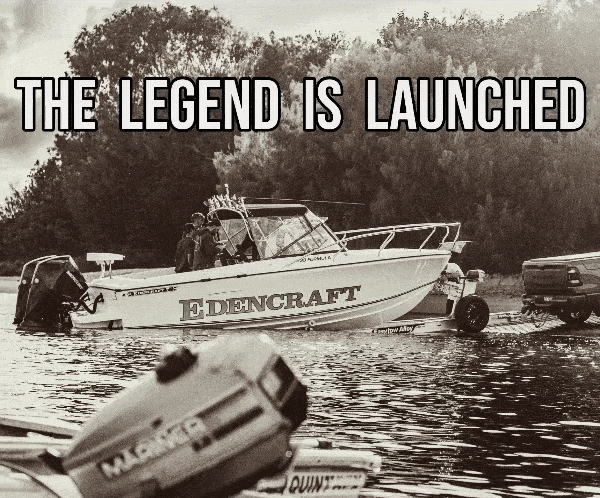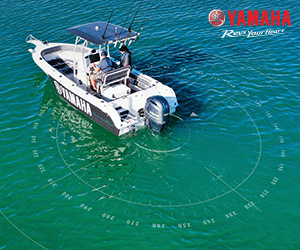Rocking On – By Dan Kaggelis
There are many types of fishable structures in our creeks and estuaries. Whether its timber snags, drains, or undercut banks, my all-time favourite creek structure is rock.
One of my favourite species when fishing around rocks is the mighty mangrove jack. Jacks love the pressure points and eddies that are found around rock structure and rocks provide the perfect ambush spot for jacks to smash unsuspecting bait fish.
This feature will explore the many different types of rock structure in our creeks and estuaries, what to look for and most importantly how they can be fished when chasing mangrove jacks.
First, let’s have a look at mud rocks. Mud rocks are created when parts of the creek banks fall into the water. Whilst they may start as muddy rocks, over time the looser mud sediment around the rocks wear away leaving the denser material behind. This creates hard rock that will remain as fishable structure for a long period of time. The fact that this type of rock can remain intact for a long time means it becomes a known feeding point for mangrove jacks. When fishing this type of rock structure, I prefer a run out tide as the rocks have plenty of water over them and the running tide creates the perfect pressure points and back eddies which as mentioned before are prime spots to find feeding jacks.
I also look for areas where there are a few rocks grouped together as the bigger structure will hold better numbers of fish. When fishing these smaller rocks, I prefer to use a heavier style plastic such as the Molix 100mm shad. These weightier plastics allow the angler to get deep within and between the rock structures and edges ,especially when the tide is running. When the tide is a little slacker, I love fishing a suspending hardbody. You can crank the lure down to the ideal depth and twitch it between the rock’s crevices.
Whilst I tend to fish more plastics these days, this is one situation where the right hard body will out-do a plastic.
My absolute favourite hard body lure for this scenario would have to be the Molix 95 Jerk 950 DRF. It’s the perfect size for jacks, suspends amazingly and has a fantastic action when twitched. It’s thinner profile also means it doesn’t splash down too hard when hitting the water which can often spook the fish. My favourite colour is the olive Ayu as it provides an effective but not over the top contrast to the rock colouration.
Whether you are fishing a hard body or plastic, its ideal to cast to the back of the rock structure first and work your lure over the top or to the side of the rocks. If you go directly over the top you run the risk of snagging up so it is better to work the edges of the rock area. Be prepared for an ambush attack from behind the rock as some jacks’ love to sit in the eddying water waiting for an unsuspecting bait fish to swim past. This is where you really need to thumb the spool and bully the hooked fish from behind the rock. In this situation I will up my leader poundage from 30 to 40lb Sunline FC Rock to help with the jack extraction process. I also increase the length of my leader in case the fish gets the advantage and begins to bury me in the rock structure. Sometimes that extra 20cm of leader can mean the difference between a success or a busted line. Sometimes you will hook jacks on the front side of the rock. This is the best place to hook one as you are already halfway out of the line parting the rock structure however a decent jack will still require some bullying to get to the boat.
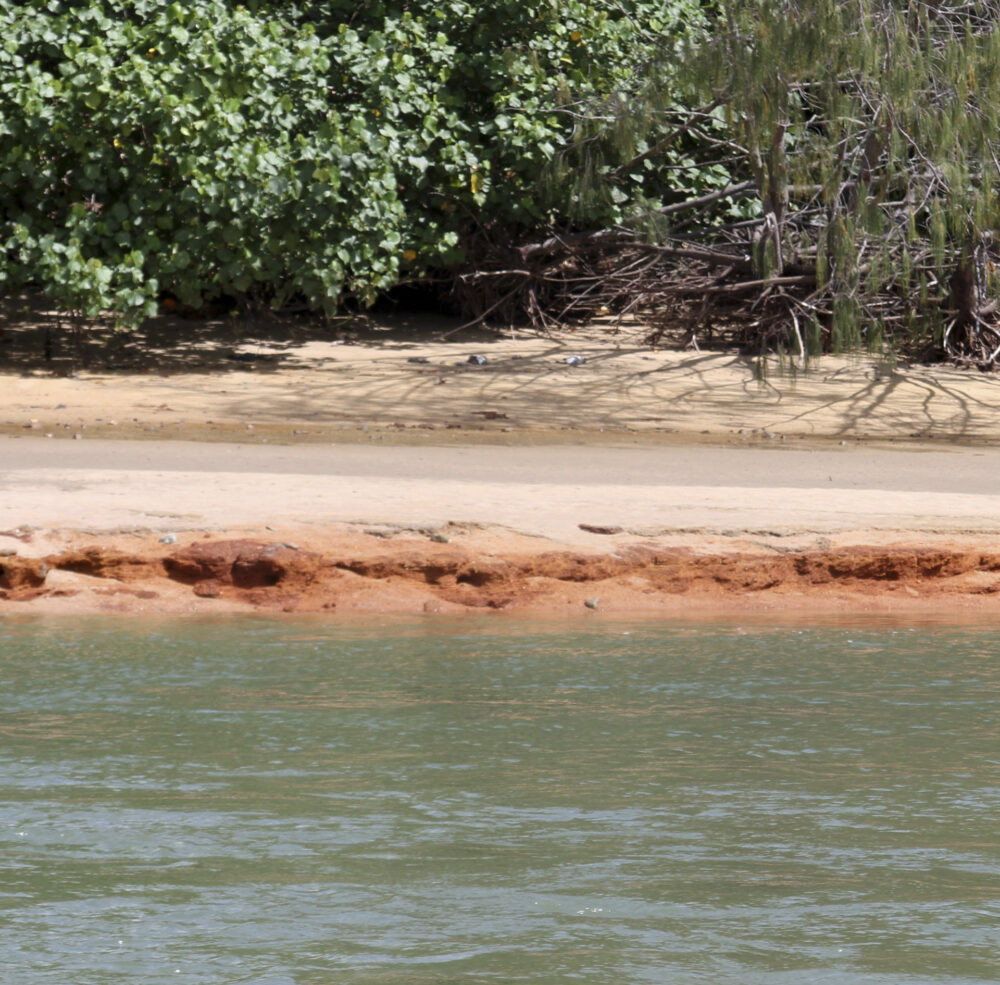
Another red rock formation. These ones are common around creek mouths and also create caves and ledges.
Another type of rock structure you can find in the creeks is what I call red rocks. These rocks can be found up creeks as well as river mouths as they become exposed by the backwash of waves and tidal movement. In the creek area, this type of rock is typically found around banks which are composed of a clay like red mud. This type of sediment is from heavily eroded banks where the mud and mangrove have been washed away leaving the harder clay like sediment behind. This creates a shale, flatter rock structure which when submerged can create caves for jacks to live in and feed from. Red rock formations are mostly small piles of rock spread over a long distance. When fishing these red rocks, I prefer to position the boat parallel to the bank in about 2.5 metres of water. Here I can make long casts down the edge of the bank and work my lures from pile to pile until I get a bite. Once again, a run out tide is preferred and heavier shad style plastics which can get to the bottom third of the water column where the rock piles are found. Hard bodies can be used here as well but if the tide is running, a standard retrieve hard body lure like a Luck Craft Pointer will get the best results. Whilst you can bounce the hardbody lure into the rock bottom, I prefer a lure which will swim just above the rock piles. This is because these rock piles can be both small and unstable so hammering into them with your lure can sometimes do more harm than good. Other lures like vibes and sinking prawns can be used, but be prepared to lose a few as the rock bottom can be very snaggy. You don’t need to fish heavy in this area, as jacks will more than likely come off the bottom to hit your lure so with a bit of thumb and rod work you can get them away from structure easily.

Side Imaging view from my Humminbird Helix 12 sounder of a perfect rock bar with a big boulder right at the end.
The next type of rock structure are rock bars. Rock bars are created when the loose sediment and sand of the river is washed away leaving the harder bottom exposed. Some rock bars are created as an extension to an already rocky bank and these are much easier to spot. When fishing rock bars, I will drift as quietly as possible over the structure and use my down imaging on my Humminbird Helix to identify which area of the rock bar the fish are holding on. Depending on the tide this could be the front edge or the back edge, or what I mostly found for jacks and barra is the biggest rock on the bar. Once your sounder gives you this information, it’s a simple case of spot locking the Minnkota Terrova just up from where you want to fish and begin peppering it with lures. Its hard to go past a vibe in this situation especially if the rock bar is in deeper water. I prefer small hops as opposed to big high rips and keeping the vibe pretty close to the bottom is a must.
Finally, our last rock structure is man-made rock walls. Man made rock walls are put in place to stop beaches and edges of creeks from eroding. These larger black rocks create a myriad of caves which jacks love to hide in. In the south east corner of Queensland where rock walls are prevalent, many anglers will troll hardbody lures for jacks as this allows for covering a lot of ground, however it can be boring. Casting lures at rock walls is a much more engaging technique and is also very effective. The biggest worry with fishing rock walls is they are usually covered in oysters, barnacles and every other razor-sharp mollusc found in the water. If a jack gets your line anywhere near these oyster covered rocks, no matter how strong your braid, it will slice through like a hot knife through butter. When I am fishing this type of structure, I tend to up my leader strength to 50lb Sunline FC Rock. Longer leader length is also a must as these fish are more than likely going to bury you due to the abundance of caves found in rock walls. Plastics and hard bodies are fished best as close to the rock edge as possible. It’s not a good idea to let your plastics sink into the rock wall as even weedless baits can still snag up with ease. Floating or suspending hardbodies are a good idea as you can work them down into the rock without sinking into caves.
Fishing rock structure is an awesome way to target jacks. The many different types of rock structure brings a diverse range of fishing options, techniques and lure types, and in the end challenging the angler to find success. This is what fishing is all about. So rock on!


